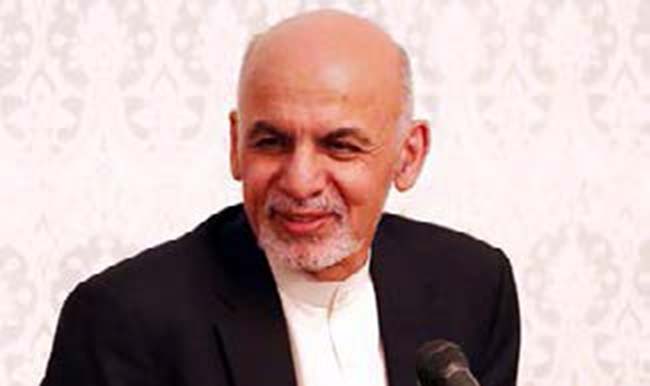Considering current economic, cultural and political conditions, it seems unanimously agreeable that Afghanistan is one of the most dependent countries in the world! Unfortunately, terms of independence neither as a general sense nor as a certain sense, such as economic or socio-political components, never seriously debated in the operating practices’ literature in Afghanistan. The ambiguous concept of independence remained more likely to a wish or a motto rather than a serious public demand being autopsied and interpreted by sophisticated thinkers. The practical step of this desire will not implement unless nationally invest on new generation who may achieve these ancient honors by gaining advanced capabilities. In clearer terms, independency depends to educating and training of children who are supposed to be the leaders of tomorrow. The greatest gifts you can give your children are the roots of responsibility and the wings of independence.
Hence, Afghanistan is much weaker than it is to speak of independency; In terms of economy, it is the most dependent country in the world, in terms of human force and expertise, Afghanistan ranks 172th country in the world! Teachers, students and young generation who are supposed to lay the foundation of independency are the most humble class in this society. They are subjected to extreme poverty, violence, health and poor investment. Half the country’s estimated around 30 million populations are below 15. Over a quarter of them die before their fifth birthday mostly from preventable diseases such as pneumonia and diarrhea. Afghanistan has some of the worst child malnourishment, stunting, mental retarded, underweighted and vitamin deficiency figures in the world. According to the World Food Program, 39% of children under the age of five are underweight. 78% of Afghan children lack access to safe water. Only 6% of children are registered at birth, leaving the vast majority without legal identity and protection. 1 in 8 Afghan women still die in childbirth. Girls are sometimes forced to marry at a very young age and they are most at risk from complication during pregnancy and labor. Some young university graduates are using tobacco, Naswar, and even opium to block pain; the pain of hunger, sickness, unemployment, physical and mental trauma. There are around two million addicts in this nation of about 30 million people, including 60,000 children under age 15, and about 13 percent are women and 7 percent are children. Most of the women are opium addicts desperate to blunt the trauma of endless war. Many are illiterate mothers with unemployed husbands. Most have a little in the way of job skills, and some became addicts while picking opium poppies to earn a living and support their families. All these are some of indicators that show that Afghanistan has taken no step towards independency.
Reaching the dream of independency needs high attention to foundations of liberty on the top as educational services free of any traditional considerations but it is hampered by a shortage of qualified teachers, discriminations, negligence, poor facilities, lawlessness and threats posed by insurgents. Even so, over two-thirds of school-age children attend school. Girls, banned from school under the Taliban regime, are gradually returning to the classroom, but 70 percent are still not enrolled. The majority of girls still do not attend primary school. Only 11% of secondary-school-age girls are enrolled in grades 7-9 and 4% enroll in grades 10-12. Many university students discontinue Due to insecurity, unemployment and despair. Physical and mental Security is the most destructive and growing factors to make them leave schools and country for the purpose of reaching better abode. Educations target such as damaging or destruction of schools by arson, poisoning, grenades, mines and rockets; threats to teachers and officials are common practice; students, teachers and other educational staff have been killed and there has been looting.
Instead of going school or doing their homework, children compel to undertake all manner of jobs. They work as street vendors, shop assistants, as blacksmiths, carpenters, tailors, domestics, auto mechanics, carpet weavers, and in brick factories. Some of them are as young as 5 or 6 years old. In the cities, children collect paper and scrap metal, shine shoes, and beg. In rural areas, many children work in agriculture. Because of limited family incomes, parents encourage their children to beg or work. Years of conflict have left many families parentless and with child-headed households.
Thus, it is reported that children from Afghanistan are trafficked they are subjected to forced labor, child soldiers, forced begging, commercial sexual exploitation, or debt bondage. In first years of Mr. Karzai government, there was a major flow of refugees returning to their home country but the flow has gradually decreased as a consequence of increasing social and political challenges. In 2015 with sixty-eight thousand refugees Afghanistan got the third place in the world! Most of these asylum seekers were young teenagers making the difficult and dangerous journey to Europe, unaccompanied by adults. These children are very susceptible and often encounter dreadful conditions in the way of illegal human trafficking and after they reach the destinations.
To end with,independency cannot be bestowed — it must be planned and achieved. It cannot be achieved unless by educating new generation, laying the foundation of economy and eliminating superstitious boundaries such as: castes, creeds, race and breaking chains of captivities. Wishing a day that tears come to my eye, and see our independent flag are waving high!
Home » Opinion » Independency Depends to Leaders of Tomorrow
Independency Depends to Leaders of Tomorrow
| Mohammad Zahir Akbari

